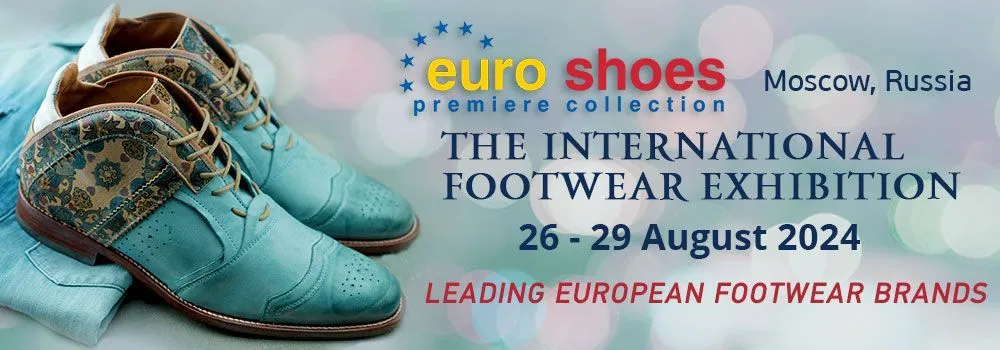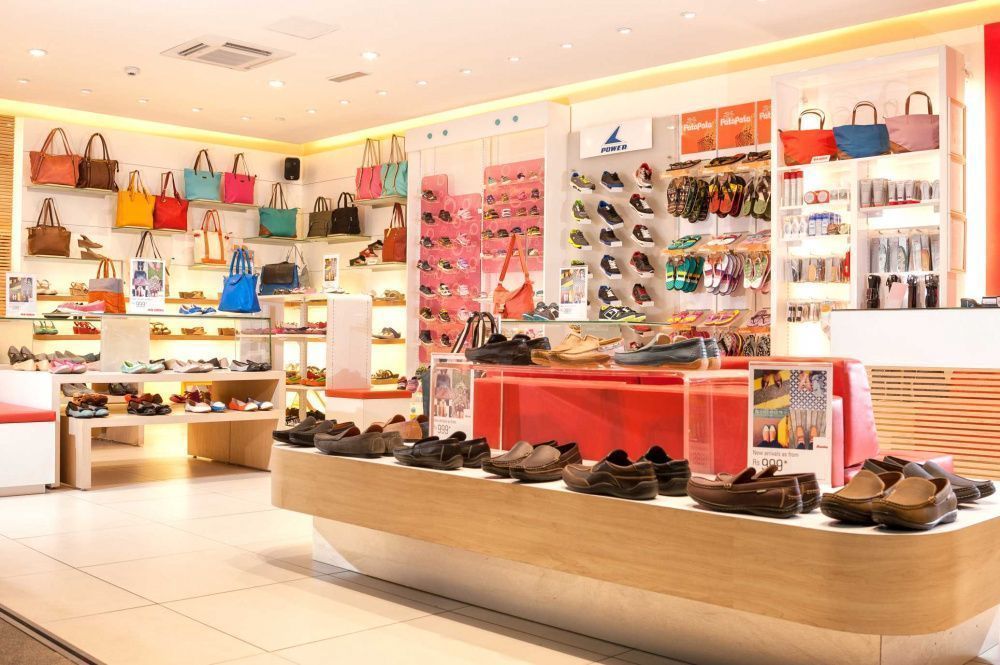
Commercial puzzle for assembly. How to create an effective and selling shoe store

 Anna Balandina -
Anna Balandina - owner of visual communications agency VM Guru, market expert in visual merchandising and store design.
@anna_balandina_vmguru, @vm_guru, www.vmguru.ru
There is a significant difference between the commercially effective retail space of a store and an effective individual brand trading concept. You can not mix these two concepts only on the basis of effectiveness.
At the moment when you decide to develop a design project for a future store or a design project for restyling a typical shoe store network, it is important to clearly state the goals that you set for yourself. What do you want to achieve? Loudly declare your brand, detach from competitors, be remembered by customers, take your place in the market (that is, invest in the future), or at the moment it is more important for you to test the product first and create an effective trading space with minimal costs.
To invest in the future and achieve success in this, the brand must seriously prepare. But first things first.
Is it possible to create a competent "selling" retail space without investing in the development of a design project for a unique trading concept?
Yes it is possible. The basis of successful store sales, in addition to, of course, the product itself and pricing policy, is a well-planned retail space in terms of architectural planning and the laws of visual merchandising.
Rules for creating an effective retail space
1. The rule of the "golden triangle".
The “Golden Triangle” is the area between the cash register, checkout area and shop windows, and it should be maximum. This allows you to expand the focus area of the buyer - the retail space in which the product is sold best.
2. The clockwise rule.
Most of the customers are right-handed, and when they enter the store, 70% of them start moving counterclockwise. This rule is important to consider when zoning a rectangular-shaped store, namely: we place the highest priority line / style group of goods to the right of the entrance.
3. Mobile zoning rule.
The space of the store should be visually divided into areas that are clear to the buyer. This makes it easier for the buyer to sort out the assortment offer and find their own product. The most effective is “mobile zoning”, that is, “without walls” zoning, when you do not build stationary zones in the store, separating one from another by partitions, but make them mobile, working with floor equipment and style filling the space.
In this case, the store can adjust the size and capacity of the goods in the zone, visually reducing or expanding it due to the location of floor equipment. There is an opportunity to change the appearance of the trading space as a whole, which creates the impression of the “everything new” for the buyer and makes him want to go to the store again.
When building mobile zones in a store, it is important to consider commercial priorities in the right sequence. First: gender and age groups (male, female, children's goods are placed separately). Second: seasonality of the goods (we do not mix goods of different seasons!). Third: we highlight style groups within these product areas and present the key product as a priority.
4. The rule of "golden trading levels."
The development of wall and floor equipment should be carried out taking into account the “golden trading levels” at which the product is best sold - the level of “outstretched arms” and the level of “customer’s gaze” (for calculating the height, the average woman's height is taken - 170 cm).
5. The rule of "warming" of shopping areas.
This tool helps to make the “cold” space (which is not visible from the entrance, or is too far from it) more working, as well as effectively use the most commercial “hot” space and the potential of the entrance zone.
Often in the stores the entrance space is empty, and the equipment is located in the back of the room, so that, according to the store management, it was easier for the buyer to go inside, but this is a gross mistake. Entrance space sells, and is very powerful. Therefore, it must contain trading equipment with a key seasonal product. Moreover, the presentation of the goods in the entrance area should be framed emotionally, with elements from the current storefront concept, because in fact this is the storefront.
At the same time, the equipment of the entrance zone should be arranged in such a way that it directs buyers into the store, to the wall equipment and further.
Examples: the effective entrance area of shoe stores of different price segments.





6. Effective trade equipment.
Your sales also directly depend on the effectiveness of the trading equipment and on its placement in the trading floor.
What should be considered when ordering retail equipment for a shoe retail store?
It is important that the wall equipment in the hall is transformable. This is necessary in order to be able to change the configuration of the shelves and the distance between them under the current collection. For example, in winter there are more high boots, and we increase the distance between the shelves for the presentation of the goods by “families”, in combination with a complementary product (bags, gloves, headgear) at several levels of the “wall”.
If the wall-mounted commercial equipment is non-removable, then in winter we often see the following picture in the store: a long row of the same type of dark goods (the same high boots) at the lower, poorly selling, level of wall-mounted equipment. With such a presentation, the buyer simply does not see the shoes, but this is an expensive seasonal product that needs to be sold and for which there is a demand in the season.
Or vice versa: in the summer, when there is more goods and no high shoes, it is necessary to rearrange the wall shelves, reducing the distance between them to 25-27 cm. This way you will create one or even two additional working levels and you can visually unload the presentation in the hall, then there is, to make it more "readable" for the buyer.
Outdoor equipment should not block the goods on the walls. The correct height and equipment design is important. It should also be transformable and mobile, so that sellers have the opportunity to move it if necessary, without fear of breaking and not physically tearing.
7. The rule of grouping equipment.
The correct location of the equipment, taking into account the distance between it, in accordance with the norms of your price segment, as well as the use of the “rooting” technique (routing, from the English Routing - the process of determining the route, the term came from the IT sphere) guides customers through the built-in communication ways through all the collections in the trading floor.

Creating a shopping concept for a shoe brand
If you decide to create a brand’s shopping concept designed for replication - a unique “frame” for your product, then it is extremely important to reflect the individuality and unique trade advantages of your brand in it.
There are such non-standard and, at first glance, completely non-commercial tasks, such as “uncovering the soul of the brand”, creating an emotional “link” between the buyer and the product through the store’s space and making this space as personalized as possible for the target consumer. In this case, you are not creating a store for everyone, but for your target audience, it’s impossible for everyone to like it, and it’s not necessary.
Today the best brand advertising is its stores! They directly interact with the buyer, it is they who help “see” the product, fall in love with the buyer in your brand and return it to you for shopping again and again.
Do I need to invest in restyling stores, if the stores are already successfully selling?
Of course, you need to create the opportunity to sell even better and “win” the hearts of new buyers, who are becoming more demanding and demanding. But restyling will be effective only if you have something to offer and what to say to the market. Let’s say you refined your collections, taking into account the tastes and preferences of the target audience, figured out your market position, created and implemented visual merchandising standards for the updated product on the network. In these cases - yes, restyling is necessary. It makes sense to first invest in the development of a unique trading network concept in order to further “attack” the market.
You can “attack” only with a strong new weapon, and this is not an advertisement, but your stores! I vote for powerful market attacks, but only if the brand is ready for this. In fashion retail today, as in war, it is important to accumulate strength, develop a strategy, create a base, and only then attack aggressively so as not to waste your budget and potential.
What is happening today in the Russian and global shoe retail?
Today, global network retailers are restyling their stores every 5-7 years, this is a powerful trend in fashion retail. Moreover, first of all, the world's leading brands are updated, in which the stores in the previous concept are not at all old and, moreover, they cannot be called ineffective.
The founder of the trend is the Spanish concern Inditex, which over the past 7 years has updated the trading concepts of almost all of its brands. What for? I believe that in order to be closer to your customer, to be able to establish, as marketers say, communication with customers through "I-messages."
It became obvious to the heavyweights of the fashion retail market that outdoor advertising today works much weaker than the stores themselves and the visual presentation of the product in them (although no one plans to refuse outdoor advertising and other types of advertising). Therefore, we repeat: the best advertisement of your product today is your store!
In the shoe segment, the trend is exactly the same, though it came a little later, over the past 5 years, trade concepts have been updated by brands such as Fornarina, Tommy Hilfiger, Ecco, GEOX, Tamaris, KEDDO, many sports brands. Of the Russian shoe chains, restyling and rebranding survived Baden, Econika, in the 2017 year the rebranding was planned by the Ralf Ringer brand.
Fornarin’s Italian brand, for example, was not afraid to create a new design for its flagship stores very futuristic and vibrant, and was noticed not only by consumers, but also by professionals: the company received a prestigious architectural award, which provided powerful PR support and helped to thunder throughout the world. The author of the futuristic concept is the designer Giorgio Borruzo.
Fornatin's flagship store in Los Angeles, USA. The author of the concept is J. Borruzo, 2012


Which of the Russian shoe network retailers have successfully “attacked” the market recently?
As a professional and an ordinary consumer, I like the new Econika stores and their updated collections. The brand did everything in a consistent and competent manner: first it developed and rejuvenated the shoe collection, then worked out a promotion strategy, and only then restyled the network.
Today, the stores of this shoe brand look like stylish European living rooms in pastel colors. Econika now seems to be not for everyone, but only for modern, successful, young women. But which of us women doesn’t consider such a thing?

This article was published in the 145 issue of the print version of the magazine.
| Please rate the article |
Materials on the topic
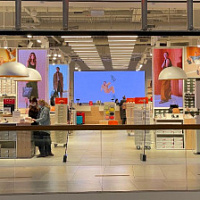
Should a shoe store spend money on digital screens?
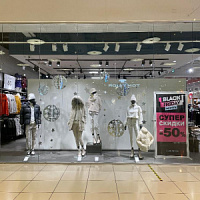
Mistakes in the lighting of the sales area that spoil the impression of a shoe store
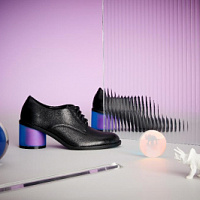
Technical aspects of display space and current trends in its design
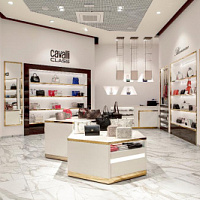
Design rules for a shoe and accessories store
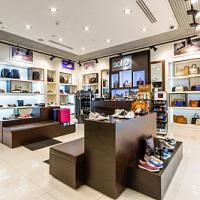
Pandemic-influenced visual merchandising transformation for shoe and accessories store
Popular
 Coach turned to Big Data analysis and won the interest of a young audience
American handbag brand Coach has planned the success of its Tabby model among a younger audience, Generation Z, by turning to big data analysis, abandoning traditional and analogue tools, such as human intuition or the ability of any executive to sense “which way the wind will blow,” writes B.O.F.
Coach turned to Big Data analysis and won the interest of a young audience
American handbag brand Coach has planned the success of its Tabby model among a younger audience, Generation Z, by turning to big data analysis, abandoning traditional and analogue tools, such as human intuition or the ability of any executive to sense “which way the wind will blow,” writes B.O.F.
 IDOL updates the concept
The IDOL brand, part of the Melon Fashion Group portfolio, opened the first flagship in an updated concept in the Aviapark shopping center in Moscow.
IDOL updates the concept
The IDOL brand, part of the Melon Fashion Group portfolio, opened the first flagship in an updated concept in the Aviapark shopping center in Moscow.
 Seven “sins” of the shoe business. How do owners harm the company with their own hands?
Why is Company X able to create a strong, profitable brand, but Company Y is struggling to make ends meet? Many people prefer to attribute success to luck, luck, or the support of strong patrons. And few people ask themselves the question: “What am I doing wrong?” Moreover, many entrepreneurs begin to harm their business from the first day of its opening. In this article, together with SR expert in the field of fashion business management and development, Maria Gerasimenko, we will look at the 7 main “sins” that business owners commit using specific examples.
Seven “sins” of the shoe business. How do owners harm the company with their own hands?
Why is Company X able to create a strong, profitable brand, but Company Y is struggling to make ends meet? Many people prefer to attribute success to luck, luck, or the support of strong patrons. And few people ask themselves the question: “What am I doing wrong?” Moreover, many entrepreneurs begin to harm their business from the first day of its opening. In this article, together with SR expert in the field of fashion business management and development, Maria Gerasimenko, we will look at the 7 main “sins” that business owners commit using specific examples.
 Louis Vuitton opens a new factory in Italy
Louis Vuitton has opened its second shoe factory in Italy. After opening the first one in Fiesso d'Artico in Veneto, the LVMH flagship brand has just opened a new production site dedicated to this category of footwear in the industrial zone of Civitano in the Marche region. There is also another brand production facility in Tuscany, where bags and leather accessories are produced, writes fr.fashionnetwork.com.
Louis Vuitton opens a new factory in Italy
Louis Vuitton has opened its second shoe factory in Italy. After opening the first one in Fiesso d'Artico in Veneto, the LVMH flagship brand has just opened a new production site dedicated to this category of footwear in the industrial zone of Civitano in the Marche region. There is also another brand production facility in Tuscany, where bags and leather accessories are produced, writes fr.fashionnetwork.com.
 The Euro Shoes@CAF exhibition will be held in Almaty
From March 11 to 13, the Euro Shoes@CAF (Central Asia Fashion) exhibition will be held in Almaty at the Atakent exhibition complex. The exhibition, which is the largest international event in the fashion industry in Central Asia, will present collections of clothing, shoes and accessories.
The Euro Shoes@CAF exhibition will be held in Almaty
From March 11 to 13, the Euro Shoes@CAF (Central Asia Fashion) exhibition will be held in Almaty at the Atakent exhibition complex. The exhibition, which is the largest international event in the fashion industry in Central Asia, will present collections of clothing, shoes and accessories.
 Euro Shoes will start operating on February 19 in Moscow!
The winter session of the international exhibition of footwear and accessories Euro Shoes premiere collection will be held in Moscow at the Expocenter from February 19 to 22. The organizers promise the presence of all the main participants at the exhibition, as well as new names from Europe, Asia and Russia.
Euro Shoes will start operating on February 19 in Moscow!
The winter session of the international exhibition of footwear and accessories Euro Shoes premiere collection will be held in Moscow at the Expocenter from February 19 to 22. The organizers promise the presence of all the main participants at the exhibition, as well as new names from Europe, Asia and Russia.
 American buyers couldn't buy Birkin bags and sued Hermès
French fashion house Hermès is facing a lawsuit in California from two customers who were unable to purchase exclusive Birkin bags. The fashion house is accused of unfair commercial practices.
American buyers couldn't buy Birkin bags and sued Hermès
French fashion house Hermès is facing a lawsuit in California from two customers who were unable to purchase exclusive Birkin bags. The fashion house is accused of unfair commercial practices.
 Why Rendez-Vous and Yandex Lavka released a “bread bag”
Shoe retailer Rendez-Vous announced the launch of a spring collaboration with Yandex Lavka and released a roll that resembles the shape of a woman’s handbag. This “Bread Bag” is presented in the Yandex.Lavka application at a price of 249 rubles. On the product packaging there is a promotional code for 1000 rubles, which can be spent in the Rendez-Vous network.
Why Rendez-Vous and Yandex Lavka released a “bread bag”
Shoe retailer Rendez-Vous announced the launch of a spring collaboration with Yandex Lavka and released a roll that resembles the shape of a woman’s handbag. This “Bread Bag” is presented in the Yandex.Lavka application at a price of 249 rubles. On the product packaging there is a promotional code for 1000 rubles, which can be spent in the Rendez-Vous network.
 Camper has released innovative sneakers - designers
Spanish brand Camper's new Roku sneaker features six interchangeable components to create up to 64 different looks and color combinations. Roku means "six" in Japanese.
Camper has released innovative sneakers - designers
Spanish brand Camper's new Roku sneaker features six interchangeable components to create up to 64 different looks and color combinations. Roku means "six" in Japanese.
 Christian Louboutin presented a collection in a cowboy style
At the Loubi Show in Paris, the French luxury brand Christian Louboutin presented its fall 2024 collection, following the trend - in the style of the Wild West. It included cowboy boots and rhinestone loafers.
Christian Louboutin presented a collection in a cowboy style
At the Loubi Show in Paris, the French luxury brand Christian Louboutin presented its fall 2024 collection, following the trend - in the style of the Wild West. It included cowboy boots and rhinestone loafers.
 Fashion Week takes place in Moscow
Fashion Week takes place in the Russian capital. Events include fashion shows, markets where you can purchase clothes, bags and accessories, and a B2B Showroom for fashion industry professionals.
Fashion Week takes place in Moscow
Fashion Week takes place in the Russian capital. Events include fashion shows, markets where you can purchase clothes, bags and accessories, and a B2B Showroom for fashion industry professionals.
 Turkish brand Vaneda on Euro Shoes
Street style, sport, outdoor, military – the main style directions of footwear of the company from Turkey
Turkish brand Vaneda on Euro Shoes
Street style, sport, outdoor, military – the main style directions of footwear of the company from Turkey
 Kari accuses Zenden of unfair competition and is suing the FAS
The largest Russian shoe chain, Kari, appealed to the Moscow Arbitration Court to declare the actions of the Federal Antimonopoly Service (FAS) illegal, writes RBC.
Kari accuses Zenden of unfair competition and is suing the FAS
The largest Russian shoe chain, Kari, appealed to the Moscow Arbitration Court to declare the actions of the Federal Antimonopoly Service (FAS) illegal, writes RBC.
 Fashion trends Fall-Winter 2023/24 for commercial footwear purchases
Permanent contributor to Shoes Report. Elena Vinogradova, an expert in sales and purchases in the fashion business, prepared an overview of the trends for the autumn-winter 2023/24 season especially for us.
Fashion trends Fall-Winter 2023/24 for commercial footwear purchases
Permanent contributor to Shoes Report. Elena Vinogradova, an expert in sales and purchases in the fashion business, prepared an overview of the trends for the autumn-winter 2023/24 season especially for us.
 MSCHF and Crocs launch "Big Yellow Boots"
Creator of the Big Red Boots, Brooklyn brand MSCHF has teamed up with American plastic clog and sandal brand Crocs for another oversized shoe. The new Big Yellow Boots will go on sale on August 9th.
MSCHF and Crocs launch "Big Yellow Boots"
Creator of the Big Red Boots, Brooklyn brand MSCHF has teamed up with American plastic clog and sandal brand Crocs for another oversized shoe. The new Big Yellow Boots will go on sale on August 9th.
 Five rules of professional lighting for a shoe store - something that is relevant in any season
When developing a lighting concept for shoe retailers, it is important to take into account not only the history of the brand, the architectural content of the premises, the target audience of the stores, but also the seasonality of the goods. With the onset of the cold season, client preferences change: bright weightless shoes are replaced by more massive models in discreet dark colors. Despite significant differences in summer and winter collections, the overall philosophy of the brand, its recognition should remain unchanged at any time of the year. Tatyana Ryzhova, an SR lighting expert in fashion retail, has identified five basic rules for a competent lighting concept for a shoe store for readers of the magazine, which will help to present winter assortment to customers in a winning way.
Five rules of professional lighting for a shoe store - something that is relevant in any season
When developing a lighting concept for shoe retailers, it is important to take into account not only the history of the brand, the architectural content of the premises, the target audience of the stores, but also the seasonality of the goods. With the onset of the cold season, client preferences change: bright weightless shoes are replaced by more massive models in discreet dark colors. Despite significant differences in summer and winter collections, the overall philosophy of the brand, its recognition should remain unchanged at any time of the year. Tatyana Ryzhova, an SR lighting expert in fashion retail, has identified five basic rules for a competent lighting concept for a shoe store for readers of the magazine, which will help to present winter assortment to customers in a winning way.
 I doubt and object: how to find an approach to difficult clients?
How good and serene would be the work of a salesperson if the customers were calm, cheerful, always knew exactly what they wanted, and bought, bought, bought! It is a pity that this is possible only in dreams. Therefore, we will not dream, but we will act. Together with Maria Gerasimenko, a permanent author of SR, we understand the doubts and objections of buyers and build a strategy for working with them. Our expert pays special attention to the two main objections of buyers, on which 82% of sales are lost.
I doubt and object: how to find an approach to difficult clients?
How good and serene would be the work of a salesperson if the customers were calm, cheerful, always knew exactly what they wanted, and bought, bought, bought! It is a pity that this is possible only in dreams. Therefore, we will not dream, but we will act. Together with Maria Gerasimenko, a permanent author of SR, we understand the doubts and objections of buyers and build a strategy for working with them. Our expert pays special attention to the two main objections of buyers, on which 82% of sales are lost.
 EURO SHOES presents an updated section of the GLOBAL SHOES exhibition with collections of shoe and bag brands from Asian countries
EURO SHOES premiere collection is expanding. Along with the traditional pool of leading European footwear brands from Germany, Spain, Italy and Turkey, several dozen footwear and bag brands from the Middle Kingdom will be presented in the GLOBAL SHOES section at the Moscow Expocentre from August 29 to September 1.
EURO SHOES presents an updated section of the GLOBAL SHOES exhibition with collections of shoe and bag brands from Asian countries
EURO SHOES premiere collection is expanding. Along with the traditional pool of leading European footwear brands from Germany, Spain, Italy and Turkey, several dozen footwear and bag brands from the Middle Kingdom will be presented in the GLOBAL SHOES section at the Moscow Expocentre from August 29 to September 1.
 World Footwear Yearbook: Global footwear production reaches 23,9 billion pairs and is back to pre-pandemic levels
The Portuguese association of shoe manufacturers APICCAPS published the 13th edition of the international statistical bulletin World Footwear Yearbook for 2023, according to which in 2022 the production and export of shoes worldwide increased by 7,6% and 9%, respectively, and the world production of shoes reached 23,9 billion couples and returned to pre-pandemic levels.
World Footwear Yearbook: Global footwear production reaches 23,9 billion pairs and is back to pre-pandemic levels
The Portuguese association of shoe manufacturers APICCAPS published the 13th edition of the international statistical bulletin World Footwear Yearbook for 2023, according to which in 2022 the production and export of shoes worldwide increased by 7,6% and 9%, respectively, and the world production of shoes reached 23,9 billion couples and returned to pre-pandemic levels.
 Rostov footwear brand Novak presented a collection of sneakers and sneakers
In the spring-summer 2023 season, the Rostov-on-Don shoe brand Novak presented a cute collection of sneakers and sneakers for every day. The upper of the shoe is made of genuine leather, suede, nubuck, the sole is made of light EVA.
Rostov footwear brand Novak presented a collection of sneakers and sneakers
In the spring-summer 2023 season, the Rostov-on-Don shoe brand Novak presented a cute collection of sneakers and sneakers for every day. The upper of the shoe is made of genuine leather, suede, nubuck, the sole is made of light EVA.
 Jacquemus x Nike collaboration released
The second collaboration between Jacquemus and Nike, which has been talked about so much, is finally out. The appearance of the couple for many was a surprise. The model of Nike Air Force 1 sneakers, which was taken as the basis of the new collection, has undergone significant changes.
Jacquemus x Nike collaboration released
The second collaboration between Jacquemus and Nike, which has been talked about so much, is finally out. The appearance of the couple for many was a surprise. The model of Nike Air Force 1 sneakers, which was taken as the basis of the new collection, has undergone significant changes.
 Crocs releases a collaboration with Barbie
If Barbie ditched heels and wore crocs, they would be pink. It was this collection in pink that was released by the American brand of plastic clogs Crocs, for the release of the film "Barbie" in the United States.
Crocs releases a collaboration with Barbie
If Barbie ditched heels and wore crocs, they would be pink. It was this collection in pink that was released by the American brand of plastic clogs Crocs, for the release of the film "Barbie" in the United States.
 Japanese BAPE takes to the catwalk MSCHF Big Red Boots
The story of Brooklyn brand MSCHF's oversized rubber boots continues. The last time they made noise in the auditorium was at the Rick Owens menswear show. Now they have already appeared on the podium.
Japanese BAPE takes to the catwalk MSCHF Big Red Boots
The story of Brooklyn brand MSCHF's oversized rubber boots continues. The last time they made noise in the auditorium was at the Rick Owens menswear show. Now they have already appeared on the podium.
 Shoe educational program: what shoe soles are made of
“What is the difference between TEP and EVA? What does tunit promise me? Is PVC glue? What is the sole of these shoes made of? ”- the modern buyer wants to know everything. In order not to smash his face in front of him and be able to explain whether such a sole suits him in soles, carefully read this article. In it, process engineer Igor Okorokov tells what materials the soles of shoes are made of and what makes each of them so good.
Shoe educational program: what shoe soles are made of
“What is the difference between TEP and EVA? What does tunit promise me? Is PVC glue? What is the sole of these shoes made of? ”- the modern buyer wants to know everything. In order not to smash his face in front of him and be able to explain whether such a sole suits him in soles, carefully read this article. In it, process engineer Igor Okorokov tells what materials the soles of shoes are made of and what makes each of them so good.
 How to set prices that will earn
Some businessmen still confuse the concept of margin with the concept of trade margins and set prices for their goods, guided solely by the example of competitors. No wonder they go broke! Analyst at the Academy of Retail Technologies Maxim Gorshkov gives several tips and formulas with which you can set not only ruinous, but also profitable prices.
How to set prices that will earn
Some businessmen still confuse the concept of margin with the concept of trade margins and set prices for their goods, guided solely by the example of competitors. No wonder they go broke! Analyst at the Academy of Retail Technologies Maxim Gorshkov gives several tips and formulas with which you can set not only ruinous, but also profitable prices.
 Sales of shoes and accessories: effective techniques for business rhetoric
Which speech modules are effective in communicating with potential and current customers of shoe stores, and which are not, Anna Bocharova, a business consultant, knows.
Sales of shoes and accessories: effective techniques for business rhetoric
Which speech modules are effective in communicating with potential and current customers of shoe stores, and which are not, Anna Bocharova, a business consultant, knows.
 We form the salary of sellers: expert advice
“How do you charge your consultants for personal or general sales?” Is one of the most popular questions causing a lot of controversy and gossip on the online forums of retail business owners. Indeed, how to properly form the earnings of sellers? But what about bonuses, where to get a sales plan from, do employees allow them to buy goods at discounted stores? In search of truth, the Shoes Report turned to a dozen shoe retailers, but no company wanted to disclose its motivation system - the process of its development was too complicated and individual. Then we asked four business consultants, and finally became convinced that the topic of seller motivation is very complex, because even our experts could not come to a common opinion.
We form the salary of sellers: expert advice
“How do you charge your consultants for personal or general sales?” Is one of the most popular questions causing a lot of controversy and gossip on the online forums of retail business owners. Indeed, how to properly form the earnings of sellers? But what about bonuses, where to get a sales plan from, do employees allow them to buy goods at discounted stores? In search of truth, the Shoes Report turned to a dozen shoe retailers, but no company wanted to disclose its motivation system - the process of its development was too complicated and individual. Then we asked four business consultants, and finally became convinced that the topic of seller motivation is very complex, because even our experts could not come to a common opinion.
 Technology Selling Issues
There is nothing worse than meeting the buyer with the words “Hello, can I help you with something?”, Because the seller works in the store just to help. Criticizing this well-established pattern of communication with the buyer, Andrei Chirkarev, business coach for effective sales and the founder of the New Economy project, shares the technology of truly selling issues with readers of Shoes Report.
Technology Selling Issues
There is nothing worse than meeting the buyer with the words “Hello, can I help you with something?”, Because the seller works in the store just to help. Criticizing this well-established pattern of communication with the buyer, Andrei Chirkarev, business coach for effective sales and the founder of the New Economy project, shares the technology of truly selling issues with readers of Shoes Report.
 The whole truth about Bayer. Who is he and how to become one?
Bayer is no longer a new, but still a popular and sought-after profession. It’s fashionable to be a buyer. Buyers are at the origins of the emergence and development of trends. If the designer offers his vision of fashion in the season, then the buyer selects the most interesting commercial ideas. It is on buyers that the policy of sales of stores and what, in the end, the buyer will wear depends on. This profession is surrounded by a magical fleur, often associated with a lack of understanding of what exactly is the work of a buyer.
The whole truth about Bayer. Who is he and how to become one?
Bayer is no longer a new, but still a popular and sought-after profession. It’s fashionable to be a buyer. Buyers are at the origins of the emergence and development of trends. If the designer offers his vision of fashion in the season, then the buyer selects the most interesting commercial ideas. It is on buyers that the policy of sales of stores and what, in the end, the buyer will wear depends on. This profession is surrounded by a magical fleur, often associated with a lack of understanding of what exactly is the work of a buyer.
 Fur, and not only: types of lining
In the production of winter footwear, various materials are used that are designed to retain heat and meet the requirements of consumers: natural sheepleather, artificial fur, artificial fur from natural wool and others. All types of lining fur have their own advantages and disadvantages. Let's consider the properties of each of them.
Fur, and not only: types of lining
In the production of winter footwear, various materials are used that are designed to retain heat and meet the requirements of consumers: natural sheepleather, artificial fur, artificial fur from natural wool and others. All types of lining fur have their own advantages and disadvantages. Let's consider the properties of each of them.
 Retail Arithmetic
Before you begin to solve specific problems, you need to find out how accurately all the leaders of your company understand the basic terminology of retail.
Retail Arithmetic
Before you begin to solve specific problems, you need to find out how accurately all the leaders of your company understand the basic terminology of retail.
 How to fire a worker without tears, scandal and trial
Sooner or later, any manager is faced with the need to part with an employee. Properly and on time the dismissal procedure will save the company money, and the boss himself - nerves and time. But why sometimes, knowing that a break in relations is inevitable, we put off the decision for months?
How to fire a worker without tears, scandal and trial
Sooner or later, any manager is faced with the need to part with an employee. Properly and on time the dismissal procedure will save the company money, and the boss himself - nerves and time. But why sometimes, knowing that a break in relations is inevitable, we put off the decision for months?


